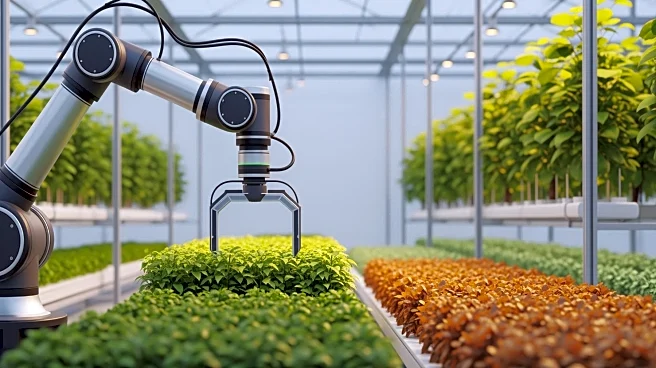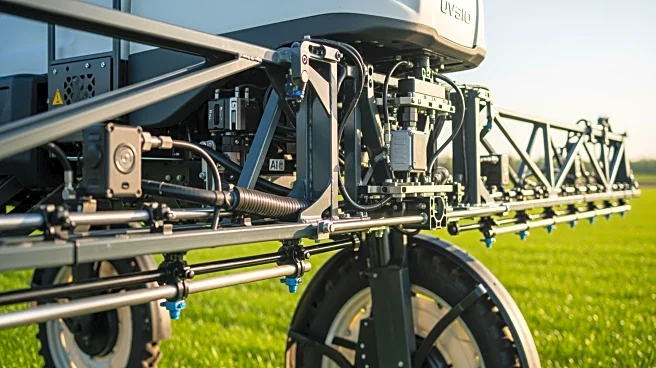What's Happening?
AVL Motion has developed an asparagus harvesting robot, the AVL Compact S9000, capable of autonomously and selectively harvesting asparagus. The robot, equipped with twelve harvesting modules, can perform
up to 9,000 harvesting actions per hour. Field trials conducted by Wageningen University & Research and Dutch grower Teboza demonstrated that the robot matches the yield and quality of human pickers but operates three to four times faster under typical conditions. The robot uses a pneumatically driven cylinder with a cutting mechanism to harvest asparagus, which is then transported via a conveyor belt to a collection tray. The trials showed no significant difference in yield between machine and manual harvesting, although the robot sometimes harvested thinner asparagus that manual pickers might leave behind.
Why It's Important?
The development of the AVL Compact S9000 asparagus harvesting robot represents a significant advancement in agricultural automation, particularly for high-value vegetable crops. By increasing harvesting speed and maintaining quality, the robot can potentially reduce labor costs and increase efficiency in asparagus production. This technology could lead to broader adoption of automation in agriculture, addressing labor shortages and enhancing productivity. The robot's ability to operate continuously without fatigue and during adverse weather conditions further underscores its potential to transform traditional farming practices.
What's Next?
Further research is needed to address the shift in grading observed during trials, where the robot produced more tips and hollow asparagus compared to manual harvesting. AVL Motion plans to continue optimizing the robot's performance and efficiency, potentially increasing its speed to replace more manual workers. The company aims to deploy the robot in more fields, enhancing its adaptability to different agricultural environments. As the technology matures, it could lead to wider adoption across various crops, driving innovation in the agricultural sector.
Beyond the Headlines
The introduction of robotic harvesting technology raises ethical and economic considerations, such as the impact on employment in agriculture and the need for workers to adapt to new technologies. Additionally, the shift towards automation may influence agricultural policies and investment in technology development. Long-term, this could lead to changes in the agricultural workforce and the skills required for future farming operations.











